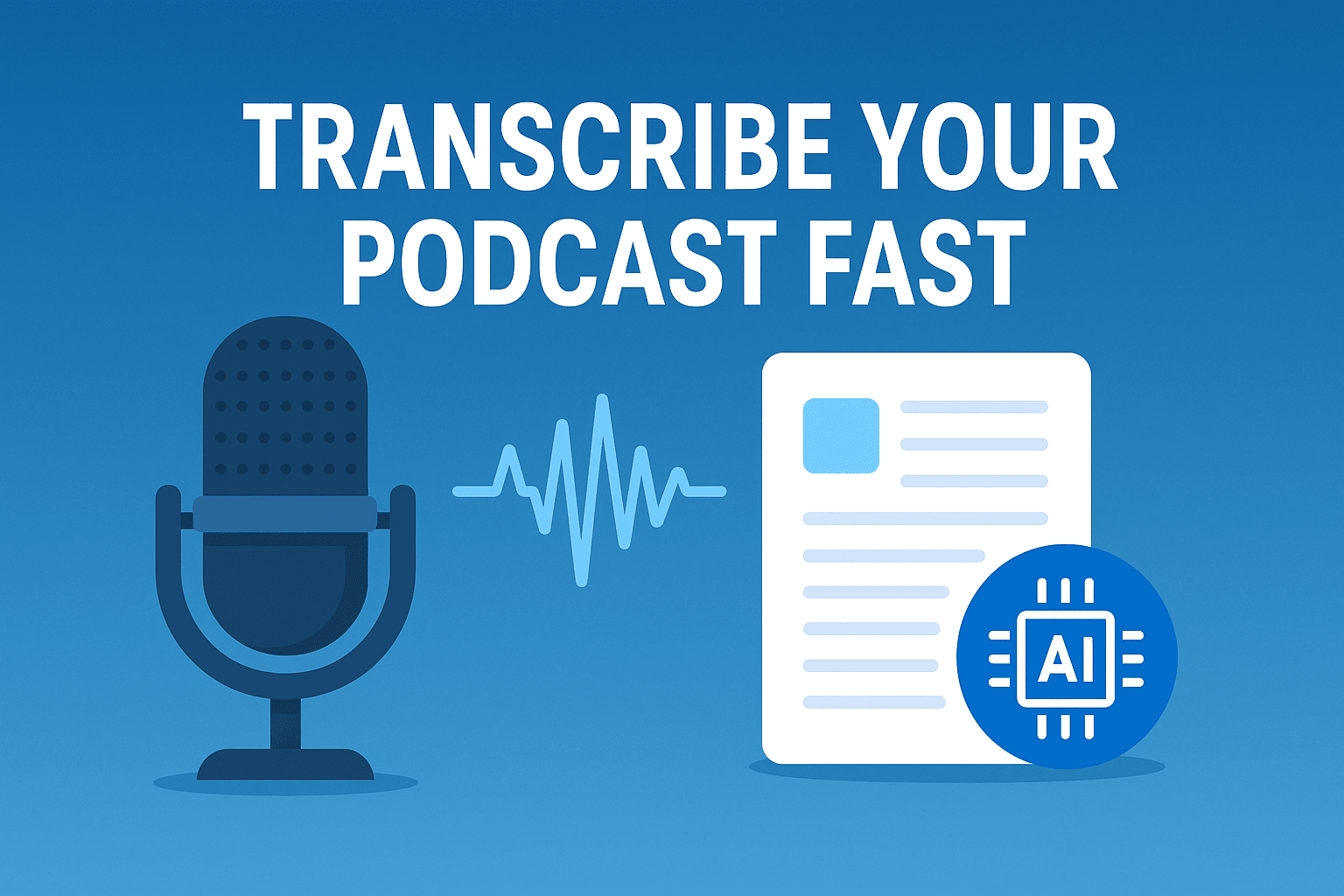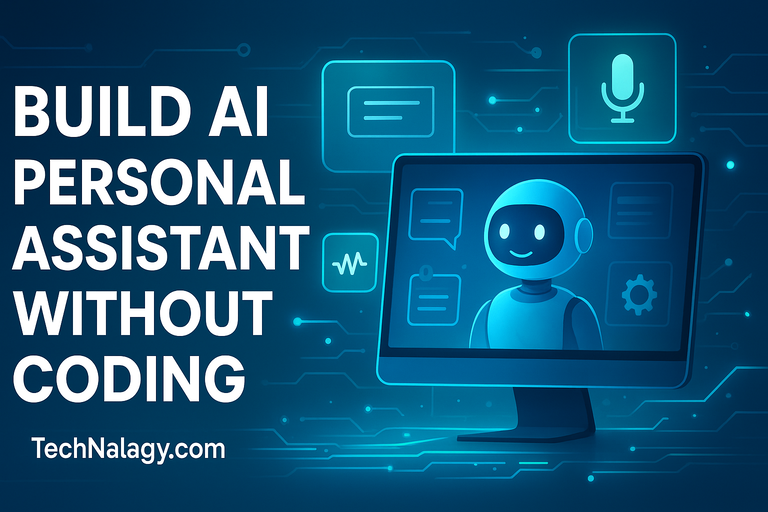Podcast Transcription Made Easy: Best Tools, Tips & Free Options
Unlock how podcast transcription can simplify your workflow, make your content more discoverable, and help your audience engage deeper. Let’s explore tools, tips, and free options to bring your audio into text—without spammy fluff.
Table of Contents
What Is Podcast Transcription?
Podcast transcription is the process of converting spoken words from a podcast episode into written text. This transcript becomes searchable, skimmable, and accessible—both for listeners (like non‑native speakers and deaf or hard‑of‑hearing audiences) and for search engines.
Well‑formatted podcast transcription helps highlight key quotes, provide show notes, captions, or blog repurposing—all with SEO value.
Benefits of Podcast Transcription
Improves Accessibility
Providing a transcript ensures your content is accessible to hearing‑impaired listeners and supports non‑native English speakers or auditory learners who prefer to read.
Boosts SEO & Discovery
Search engines can’t listen to audio—only read text. Including a podcast transcription gives Google and others rich, crawlable text to index, improving rankings and visibility on SERPs. The additional dwell time from readers boosts on‑page engagement, which also signals SEO value.
Enhances Engagement & Repurposing
Transcripts enable you to create show notes, quotes, blog posts, social media snippets, and content summaries in seconds. This not only saves time but also maximizes the return on each episode.
How to Transcribe a Podcast
Manual vs. Automated vs. Human Services
- Manual transcription is free but time‑consuming and error‑prone.
- Automated tools use AI and can generate transcripts in minutes.
- Human transcription (like Rev or GoTranscript) offers high accuracy at higher cost.
Step‑by‑Step Workflow
- Prepare clean, noise‑free audio.
- Upload to your chosen tool or service.
- Allow transcript generation.
- Edit carefully—correct speaker labels, timestamps, filler words.
- Publish transcript on episode page, with visible formatting, key quotes, headings.
- Optimize with keyword placement—naturally in intro, headings, and conclusion.
Best Podcast Transcription Tools: Free, Paid & AI‑Powered
Riverside
Riverside offers free AI transcription with multilingual support and editing tools integrated into its podcast recording platform—ideal for podcasters on a budget.
Otter.ai
Otter provides up to 300 free transcription minutes per month, speaker identification, editing, and summaries. Paid plans expand limits further.
Descript
Descript lets you edit audio by editing text—excellent for detailed work and podcast editing workflows, plus highly accurate AI transcription.
Sonix
Sonix is solid for clear editing, handles multiple languages, and includes collaboration tools—offers trial minutes before transitioning to a pay‑per‑hour structure.
Temi & Rev
Temi offers a free 45‑minute trial, then ~$0.25/minute. Rev includes both AI and optional human transcription, free 45‑minute trial then subscription plans starting at $9.99/month.
Krisp
Krisp combines AI transcription with noise cancellation—helpful where audio clarity matters. Its free tier makes it easy to test. Great when background noise reduces accuracy.
Other Tools
Additional tools include Castmagic, Trint, Podcastle, and Cleanvoice—each offering AI-enhanced transcription plus extras like automatic summaries or show‑note generation for podcast workflows.
Tips for Accurate Podcast Transcription
Capture Good Audio
Use decent microphones and reduce background noise. Tools like Krisp help with noise cancellation before transcription.
Speaker Identification
Ensure transcripts clearly identify multiple speakers—some tools do this automatically; others require manual labeling.
Timestamps & Editing
Review and adjust timestamps. Remove filler words or non‑verbal sounds, unless you choose to keep them intentionally.
SEO Optimization
Use your focus keyword podcast transcription naturally in headings (H2 or H3), introduction, body content, and conclusion—keeping density ~1.5%. Avoid stuffing or awkward repetition.
Natural Formatting
Break transcripts into sections, use punctuation, highlight quotes, and provide introductions and summaries so it reads well on the page.
Choosing the Right Tool for You
- For fast, budget transcription: Riverside (free) or Otter.ai.
- For integrated audio editing: Descript.
- For nuanced editing and collaboration: Sonix or Rev.
- For noisy environments: Krisp.
Consider your budget, volume of audio, need for accuracy, and whether you want extra features like summaries or editing tools. Test free tiers before committing.
Podcast Transcription for SEO & Accessibility
By publishing SEO‑optimized podcast transcription content, you not only improve discoverability—but also serve readers who prefer reading, boost time on page, and improve accessibility overall.
Make transcripts part of your content repurposing strategy. Many podcasters use transcription alongside tools that automate summarization and keyword extraction. For example, if you’re exploring broader workflow automation, check out our article on artificial intelligence tools.
For an external authoritative reference, a great example comes from Castmagic, which outlines how podcast transcription increases engagement, accessibility, and search performance. Their 2024 guide explains how automated tools can simplify the process and amplify content reach.
Common Mistakes to Avoid
- Keyword stuffing: don’t overuse the phrase podcast transcription—keep it natural.
- Thin content: don’t publish transcript only—add context, summary, and formatting.
- No editing: AI transcripts need review—uncorrected errors harm readability.
- Ignoring accessibility: transcripts must be well formatted and easily accessible.
Conclusion
If you want to maximize your podcast’s impact, podcast transcription is an essential step. It boosts accessibility, drives SEO, fuels repurposing workflows, and helps you reach more listeners.
Choose a tool that fits your workflow—Riverside, Otter.ai, Descript, Sonix, Krisp, or others—and combine clean audio with careful editing. With natural use of the keyword, structured headings, and high readability, your content will perform strongly in search and deliver genuine value to your audience.

Kamran Khatri is the founder of technalagy.com, where he shares insights on AI, future tech, gadgets, smart homes, and the latest tech news. Passionate about making innovation simple and accessible, he writes guides, reviews, and opinions that help readers stay ahead in the digital world.







